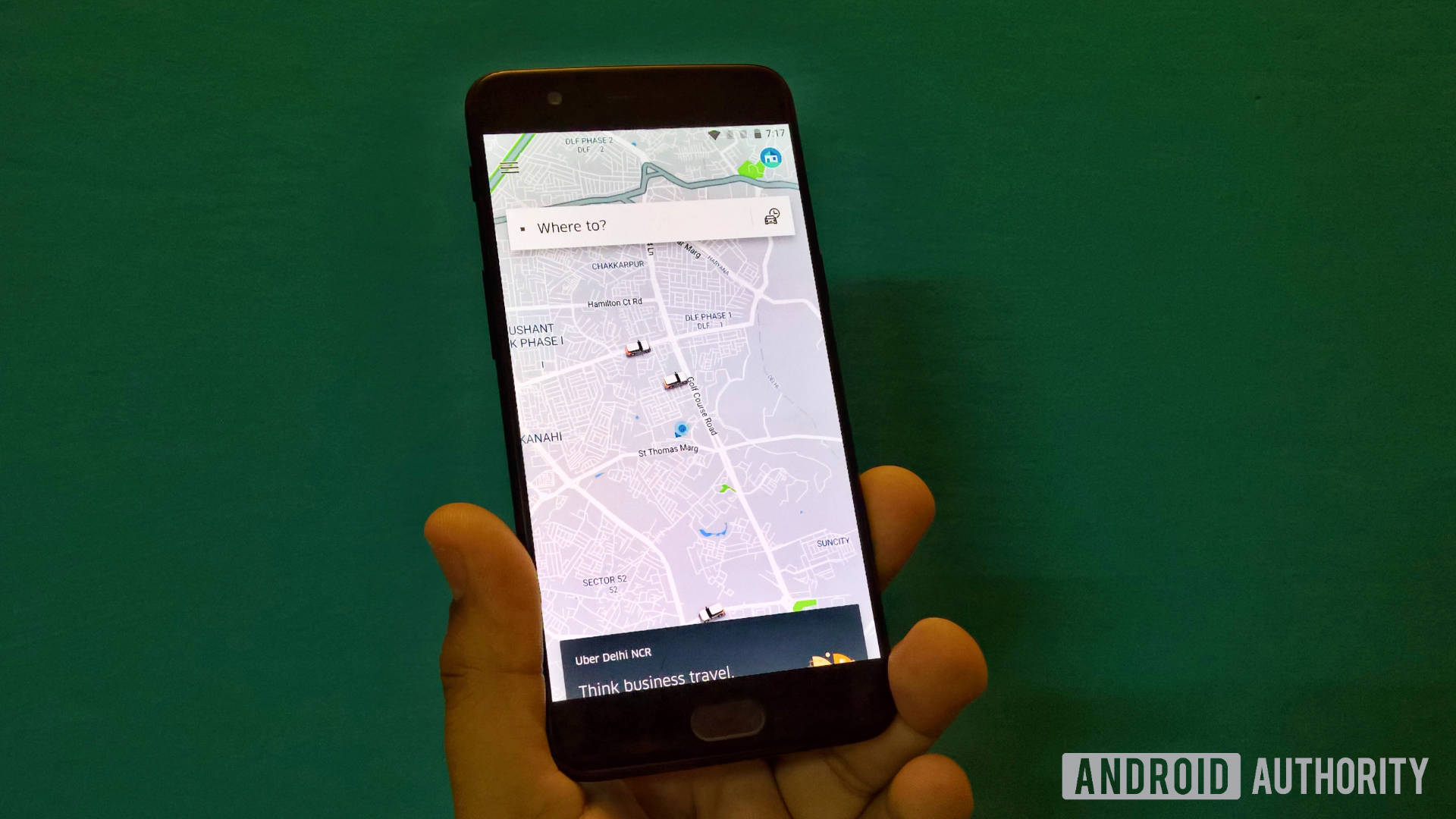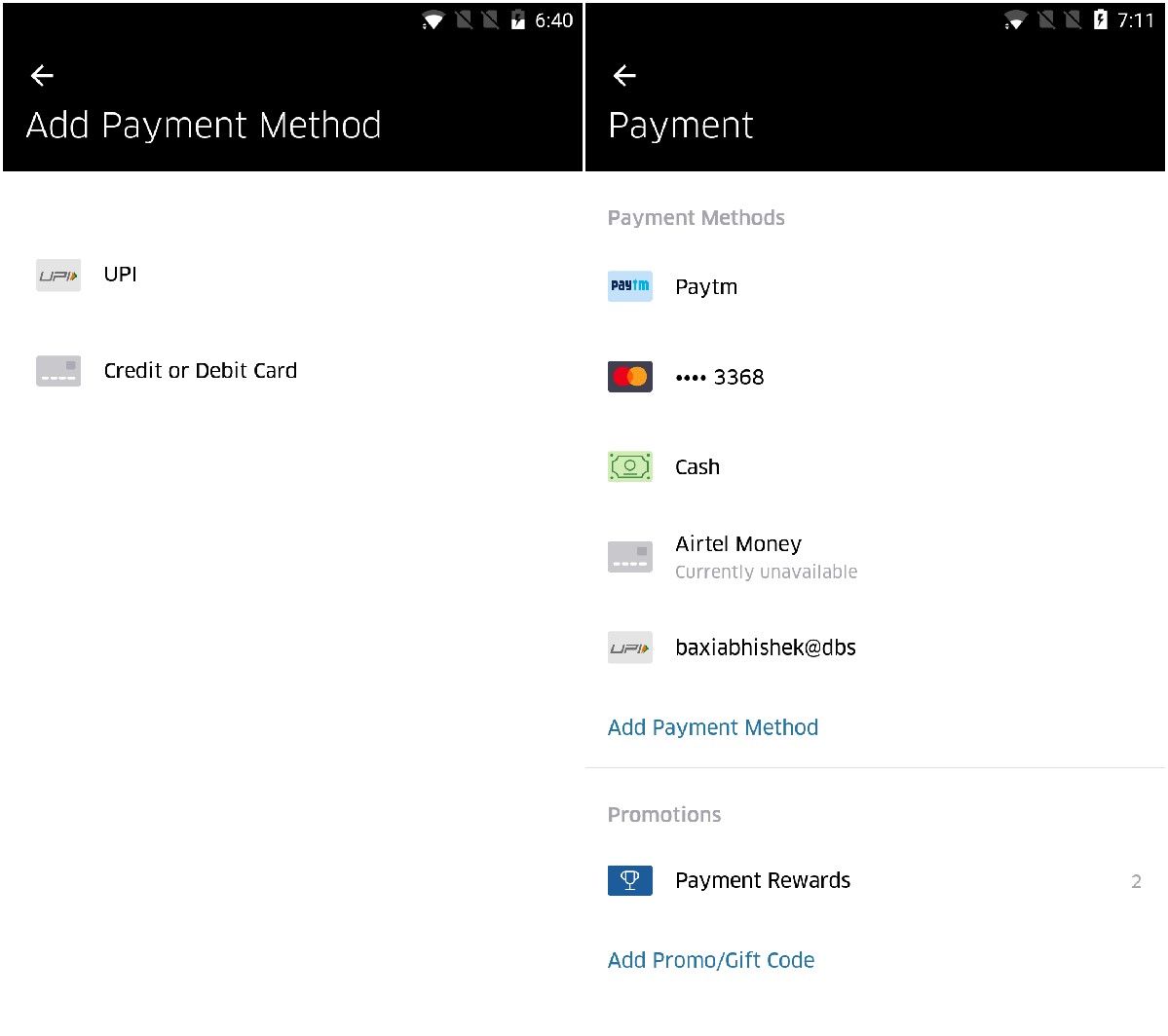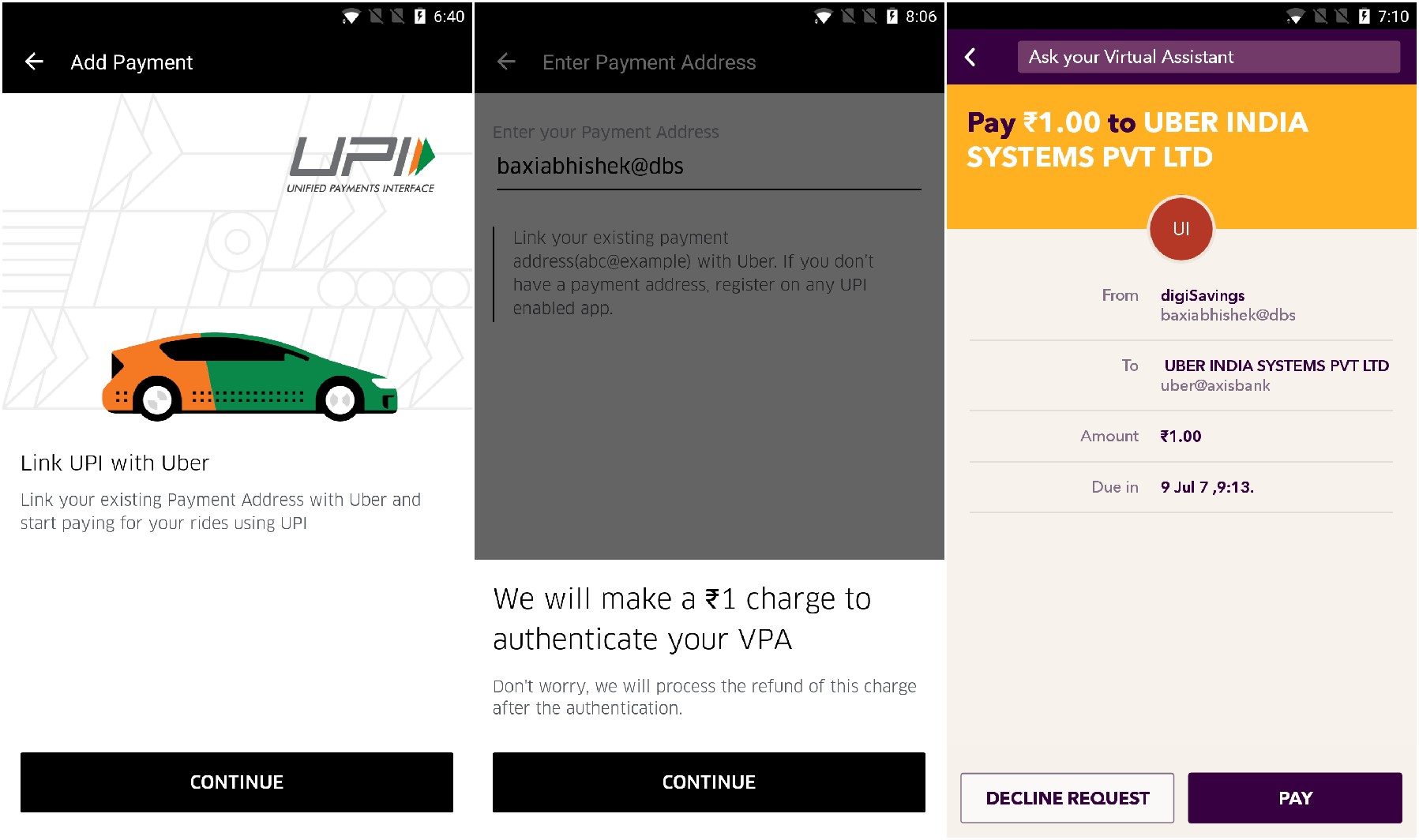Affiliate links on Android Authority may earn us a commission. Learn more.
Uber integrates UPI for payments in India; here’s how to set it up

UPDATE:
In a press conference in New Delhi today, Uber officially announced a comprehensive Unified Payments Interface (UPI) integration in partnership with National Payments Corporation of India (NPCI) and banking partners Axis Bank and HDFC Bank.
While Axis Bank will enable the UPI integration for riders, HDFC Bank will facilitate access to BHIM app for driver partners. After the first phase of soft launch last month, now users can even create UPI IDs using the Uber app.
EARLIER:
Uber has integrated UPI (Unified Payments Interface) to accept payments from riders in India. UPI is a mobile-first payment system that facilitates transactions between any two bank accounts.
UPI was launched by National Payments Corporation of India, an umbrella organization for all retail payment systems in India. While NPCI is a private entity, it is regulated by the country’s central bank – Reserve Bank of India.
How to set up UPI as a payment method for Uber?

On the Uber app, you will now find UPI as an option when you ‘Add Payment Method’ in the ‘Payment’ section. When you proceed to add UPI as a payment method, the app would proceed to link your existing Virtual Payment Address (the UPI ID) with Uber. Uber will then charge you ₹1 to authenticate your payment address, which is reimbursed after the authentication.

You will then get an SMS or notification from your UPI app (digibank, in my case) to authenticate the payment. You will then need to fire your UPI app and confirm the payment to ‘uber@axisbank’. The merchant ID indicates that Uber’s UPI account is powered by Axis Bank. Once you confirm the payment, your Uber account reflects UPI as a payment method.
After a few months of Indian operations, Uber integrated Paytm as a payment method to avoid the two-factor authentication associated with credit/debit cards in the country and the regulatory need to direct the payments though Indian banks and the payment to be in Rupees. Paytm is the leading mobile wallet in the country. Uber also flirted with Airtel Money for a while, but that never took off.
While Paytm requires you to load the wallet with funds every now and then, and to have a minimum balance to book an Uber ride, UPI payment would need to be confirmed each time. Essentially, both modes are not frictionless and it would be up to the user to choose what he or she prefers.